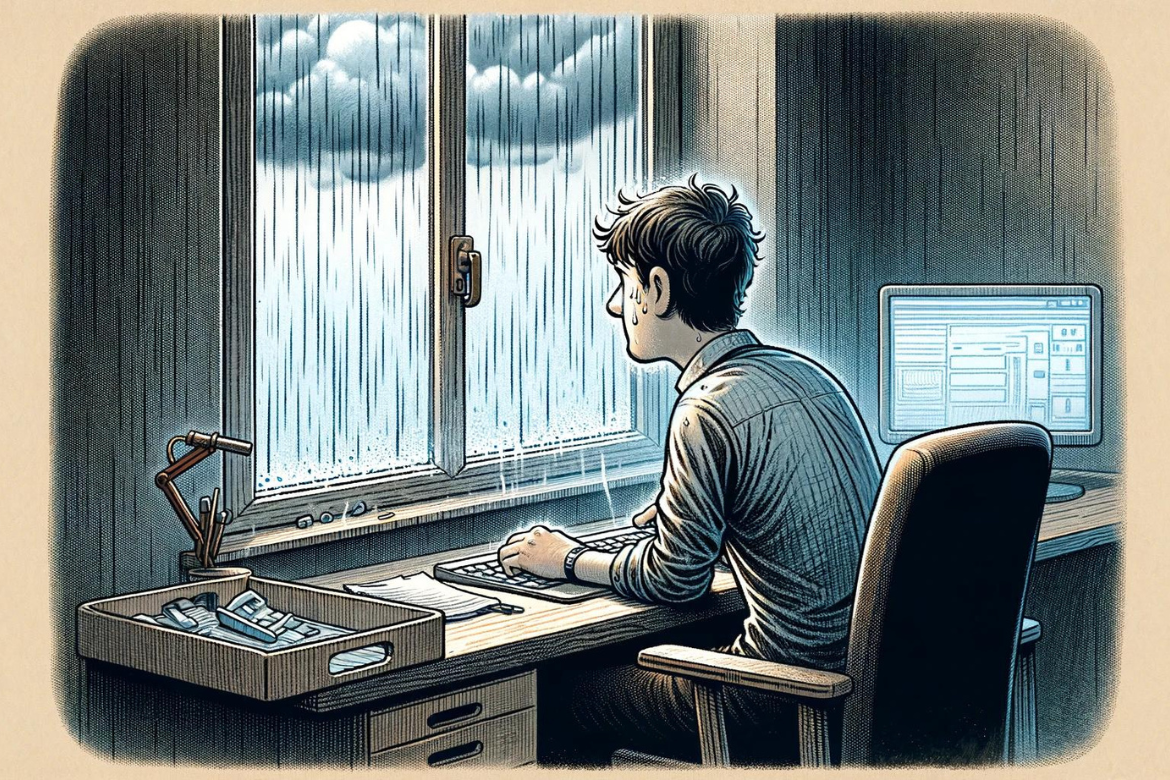One of the joys of being a workplace journalist is the amount of data we get to pour over. Or perhaps it’s one of the curses. Every time I open my email, there is inevitably a few emails that contain these five words: “According to a recent study…”
Earlier today, HR News Canada released its coverage of Gallup’s State of the Global Workplace: 2024 Report. As studies go, it’s one of the better ones. Our story honed in on the fact employee engagement in stagnating and declining, which is not the type of headline human resources professionals and employers want to see.
But there was another stat in the report that caught my eye: 20 per cent. That’s the global percentage of workers who reported feeling lonely for “a lot of the day yesterday.” The North American numbers, for Canadian and U.S. workers, were nearly identical at 18 per cent. About the same number globally — 22 per cent — reported feeling sad for “a lot” of the time in the last 24 hours.
In the hustle and bustle of our daily grind, it’s easy to overlook the quiet pain many of our colleagues are carrying with them. Loneliness and sadness are, by their nature, often experienced in silence — away from a busy jobsite or the glow of office fluorescent lights. When colleagues are around? Well, you can force and fake a smile for a few minutes.
Epidemic hiding in plain sight
Putting statistics in perspective always helps. If you’re on a Zoom call with five people, then odds are one of them felt a profound sense of loneliness yesterday. Now, imagine that scenario repeated across every office, every Zoom call, and every Slack channel worldwide. It’s an epidemic hiding in plain sight.
The pain isn’t spread evenly when you start dipping into the demographics. Employees under 35 are bearing the brunt of this loneliness, and those work fully remotely are feeling it even more acutely — 25 per cent compared to 16 per cent for their on-site counterparts. Which means the very tools that make it easy for us to keep connected might be contributing to this sense of isolation.
I’ve seen people using ChatGPT as a therapist, mostly in humorous ways, now that the app is commonplace and you can have oral conversations using your smartphone. It’s like talking to a toaster. There’s no warmth and a genuine connection is impossible. Technology, for all its marvels, has some pretty hard limits. We can text, message, and email to our heart’s content — but nothing beats a good old-fashioned face-to-face interaction.
I’ll admit to being part of the statistic. I was lonelier than usual over the last 24 hours. Introverts tend to get introspective when left alone, and my partner was away for a few days at company retreat. The walks with the dogs helped — especially our crazy mutts.
Athena, our four-year old Bernese Mountain Dog, is like glue and will burrow into you at every chance. Scout, the two-and-a-half year labradoodle has some very “doodly” qualities about her — she will, without warning, turn into a rocket and bomb around the house. Yet even their antics aren’t always enough to snap me out of it.
But then I received an email from a client, and an old friend, inviting me to lunch with a couple of colleagues I adore from a former employer. That email was like a spear piercing through the cloak of loneliness, and made my night far better than it otherwise would have been. I watched the Netflix documentary How to Rob a Bank last night, and probably enjoyed it more because of that one random reach out. Strange how that works.
It might be tempting to look at the increased isolation that remote workers feel compared to in-person staff and decide it’s time to drag everyone back to the office full time, even if it’s against their will. The act of working, of being part of a team, can undoubtedly provide a sense of purpose and belonging that alleviates loneliness.
But there’s a balance to be found. Remote work doesn’t have to be a lonely endeavour. All forms of social interaction — be it phone calls, video chats, or even a simple text message — can lift our spirits. We just have to recognize that their is a threshold and do something about it when too much screen time and isolation causes our moods to plummet. It’s a delicate dance of connection and solitude.
What HR can do about it
This is an area that falls firmly within HR’s sphere of influence. It’s not enough to offer ping-pong tables and pizza Fridays — we can’t cliché our way out of the problem.
Instead, efforts need to made to foster genuine connections with our teams. That can come in many forms, from mentorship programs to opportunities for casual, non-work conversations. It also means learning to spot some of the signs of loneliness, when possible, amongst your staff.
It can look different for everybody. But typical warning signs include productivity drops, increasing absenteeism, withdrawing from social circles, and lack of engagement. It can also manifest itself in physical ways like headaches, fatigue, anxiousness, and general malaise. “I don’t feel well, and I’m not sure why.”
The next time you check in with a colleague, don’t just ask about their workload. Ask about them. You might be the lifeline they need in a sea of digital noise.
And, for us hearty Canadians, it’s also patio season. If you’ve been putting off that lunch with a client, a friend, a colleague — make that phone call or send that email.
You just might make their day.





